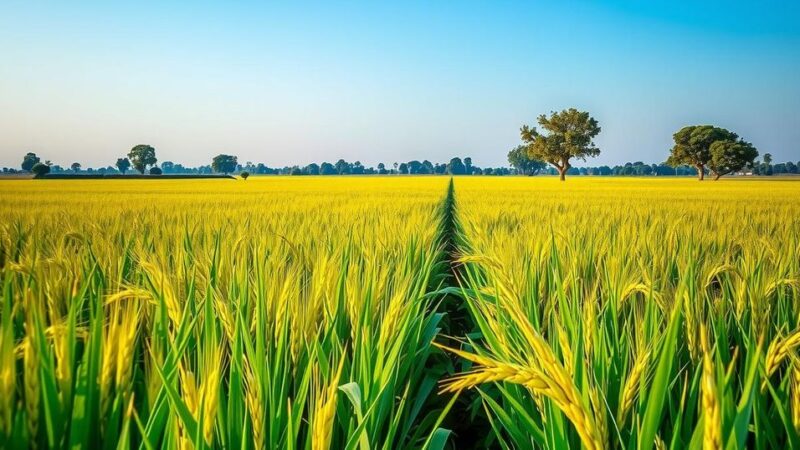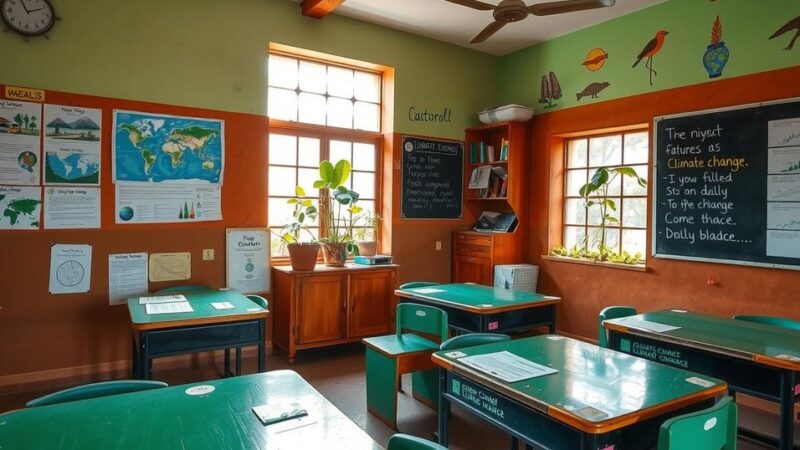The Al-Jawf region of Saudi Arabia has experienced unexpected snowfall, prompting discussions on climate change implications. While this phenomenon has delighted social media users and may enhance spring crops, experts warn it indicates a pattern of erratic weather driven by rising global temperatures. Caution is advised as the region remains susceptible to climate-related challenges.
The Al-Jawf region of Saudi Arabia has recently been graced with unprecedented snowfall, an event that has captured the attention of social media users and climate scientists alike. Traditionally known for its moderate climate and fertile soil, Al-Jawf now showcases a wintery landscape contrasting starkly with its arid surroundings. Despite the visual allure, meteorologists suggest this snowfall may serve as a harbinger of climate distress, highlighting the region’s vulnerability to changing weather patterns exacerbated by climate change. This phenomenon arose from a low-pressure system originating in the Arabian Sea, which merged with the hot desert air, resulting in thunderstorms, torrential rainfall, hail, and snowfall. Past incidents of severe weather, including heavy floods in neighboring Dubai and Oman, have raised concerns among climate experts regarding the implications of such unexpected weather events on agriculture and ecosystem stability in Saudi Arabia. Historically, Saudi Arabia is no stranger to extreme temperature variations and desertification. The G20 Climate Risk Atlas warns that the nation may experience intensified heatwaves and potential economic losses due to climate change effects by 2050. Researchers have documented a shift towards more intense rainfall patterns, suggesting a decline in lighter rain episodes while reporting increases in severe weather events. In particular, Al-Jawf’s recent snowfall heralds good news for local agriculture, possibly yielding a richer spring season as the ground retains vital moisture. While this snowfall may offer temporary agricultural benefits, caution is advised in the face of ongoing extreme weather alerts issued by UAE meteorological authorities. Residents are urged to remain vigilant in preparation for the heavy storms accompanying these weather changes. The World Bank has identified West Asia, including Saudi Arabia, as highly susceptible to climate-related impacts, projecting more erratic weather patterns. Therefore, while the snowfall presents captivating visuals, the underlying climatic changes represent a significant threat to both the environment and the economy.
The recent snowfall in the Al-Jawf region highlights a concerning trend in climate patterns across Saudi Arabia. Generally, this region boasts a temperate climate with rich soil, primarily contributing to the Kingdom’s agricultural sector. However, the occurrence of snow in an arid area draws attention to the increasing unpredictability of weather associated with climate change, which poses risks such as desertification, severe rainfall events, and potential economic fallout. Climate experts warn that these unusual conditions are likely to persist as global temperatures rise, leading to extreme weather phenomena in regions least equipped to handle them.
In summary, the snowfall in Al-Jawf serves as a striking reminder of the effects of climate change on weather patterns in Saudi Arabia. While beneficial for local agriculture in the short term, experts caution that these occurrences signal a worrying trend of extreme weather that may have lasting negative impacts on the ecosystem and economy. Thus, while the sight of snow in the desert captivates many, it simultaneously raises important questions about the future of climate resilience in the region.
Original Source: www.outlookbusiness.com






